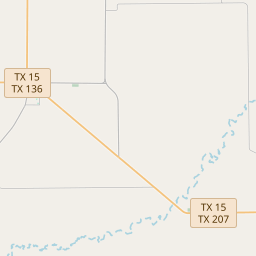Gruver Cemetery







Graves: unknown
To address the problem of cemetery destruction and to record as many cemeteries as possible, the Texas Historical Commission offers the Historic Texas Cemetery designation.
The Historic Texas Cemetery designation was developed in 1998 to help protect historic cemeteries by recording cemetery boundaries in county deed records to alert present and future owners of land adjacent to the cemetery of its existence. Every county in Texas has at least one cemetery designated as a Historic Texas Cemetery through this program. The HTC designation is the first step toward preservation of a historic cemetery.
A cemetery is eligible for designation if it is at least 50 years old and is deemed worthy of recognition for its historical associations. The very nature of a cemetery being a landmark of a family’s or community’s presence is considered to validate the criteria of historical associations. Any individual, organization, or agency may submit a request for designation.
More history nearby
The discovery of oil in 1901 near Beaumont, Texas, sparked an oil boom that transformed the state's economy and led to the rise of the modern petroleum industry.
In the 1870s, Hansford County experienced its first wave of settlement as ranchers and farmers began to establish homesteads in the area. The arrival of the railroad in 1887 further spurred growth and development, as it provided a vital link for transporting goods and people. The county was officially organized in 1889 and named after John M. Hansford, a Texas congressman who was known for his support of the Texas Panhandle region.
The early settlers faced numerous challenges, including droughts, harsh weather conditions, and conflicts with Native American tribes. However, their perseverance paid off, and the county's agriculture and ranching industries began to thrive. Wheat, corn, and cotton became important crops, while cattle ranching became a prominent livelihood for many residents.
In the 20th century, Hansford County continued to evolve with advancements in technology and infrastructure. The discovery of oil in the 1920s brought a new wave of economic growth and prosperity to the area. Today, Hansford County is a thriving community that celebrates its western heritage and rich agricultural traditions while embracing modern industries and opportunities for growth.
Hansford County Timeline
This timeline provides a condensed summary of the historical journey of Hansford County, Texas.
- 1876 - Hansford County is created and named after John M. Hansford, a Texas state congressman.
- 1880 - The first settlers begin arriving in the area, attracted by the availability of land for farming and ranching.
- 1886 - Hansford becomes an organized county with the establishment of county government.
- 1891 - The town of Hansford is established as the county seat.
- 1900 - The county's population reaches around 3,000, primarily engaged in agriculture and livestock raising.
- 1910 - The discovery of oil leads to an economic boom in the county.
- 1929 - The Great Depression hits Hansford County hard, resulting in economic hardships for the residents.
- 1950s - The discovery of natural gas reserves provides a boost to the county's economy.
- 1960s - The construction of Lake Marvin, a recreational reservoir, attracts tourists to the area.
- 1980s - The agriculture and energy sectors continue to dominate the county's economy.